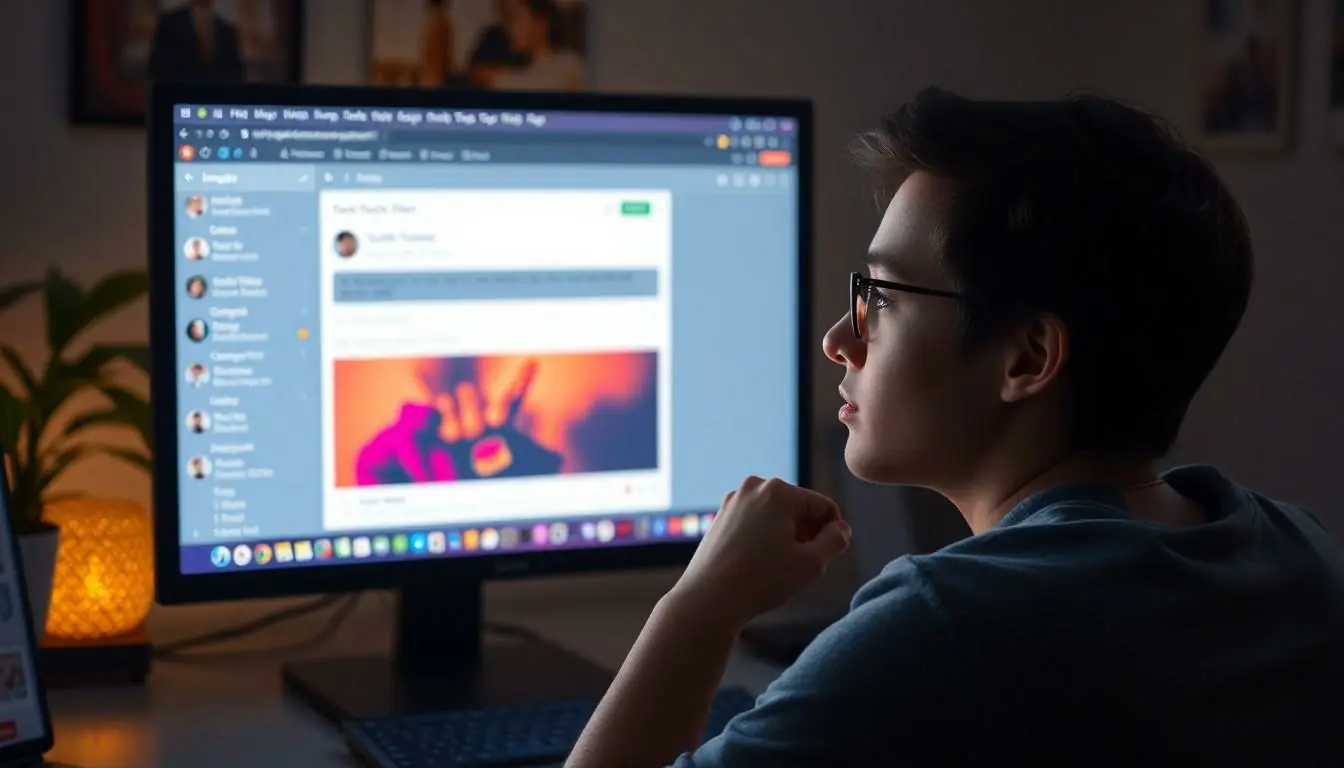In a world where words reign supreme, adding a dash of visual flair can take conversations to the next level. Ever wondered how to sprinkle some eye-catching images into your ChatGPT chats? Well, you’re in for a treat! Imagine impressing your friends or colleagues with a perfectly timed meme or an informative infographic. It’s like adding sprinkles to a cupcake—totally unnecessary but oh-so-fun!
Table of Contents
ToggleUnderstanding ChatGPT Capabilities
ChatGPT excels in generating text-based responses tailored to user prompts. This model isn’t designed for uploading or embedding images directly into conversations. Users interact with text inputs, allowing for rich dialogue and exchange of ideas. Text descriptors and links to images can enhance discussions.
Engaging in detailed explanations or asking for visual references supports this text-focused environment. Queries can encompass image descriptions or humorous memes to set the tone. Communicating effectively within the limitations of ChatGPT fosters creativity and imagination in conversations.
Users often look to AI assistants for content generation, and ChatGPT delivers high-quality text outputs. The absence of direct image capabilities necessitates alternative strategies. Link sharing or describing visuals builds mutual understanding, facilitating richer interactions.
Collaborative environments benefit from ChatGPT’s capability to summarize and interpret text. Participants can describe their visuals, and ChatGPT can help articulate those ideas in a more accessible format. Emphasizing creativity ensures that dialogues remain engaging.
Maintaining focus on the text allows for seamless exchanges of information. While traditional image insertion isn’t possible, users find satisfaction in alternative formats that convey visual content’s essence. Descriptive language plays an integral role in translating imagery into captivating dialogue.
Methods to Insert Images in ChatGPT

Incorporating images into ChatGPT conversations enhances engagement. While direct image uploads aren’t supported, several methods exist to integrate visuals.
Using Third-Party Tools
Many users opt for third-party tools to insert images effectively. Platforms like Imgur or Tinypic allow users to upload images easily. After uploading, users can copy the generated link for sharing in the chat. Providing a link streamlines the image insertion process, enabling others to view the visuals directly. Users can also utilize image editing software to create image links, ensuring that their visuals meet specific needs. This method fosters more vibrant discussions by giving users access to external images.
Direct Upload Options
Direct image upload options remain unavailable in ChatGPT. Instead, users should focus on using descriptive text to convey visual ideas. Though this approach lacks the immediate impact of an image, language can paint vivid pictures. They can describe colors, layouts, or styles to create a mental image for readers. Moreover, suggesting relevant image links further enriches interactions. This blend of description and link-sharing allows users to effectively communicate their visual ideas.
Best Practices for Image Insertion
Incorporating images into conversations enhances engagement and keeps discussions vibrant. Users should consider various factors for effective image insertion.
Image Format Considerations
Selecting the right image format significantly impacts visibility. JPGs and PNGs are widely supported and easy to use. Opt for these formats for compatibility across devices. GIFs can add fun elements but may not always render well in all contexts. Additionally, avoid obscure formats that may confuse users or fail to load. Keeping the format straightforward ensures that visuals shine without technical obstacles.
Quality and Resolution Tips
Image quality affects overall presentation. High-resolution images provide clarity and maintain detail. Aim for a resolution of at least 300 DPI for optimal results. To reduce loading times, consider compressing images while preserving quality. Users should balance file size with visual fidelity to enhance the chat experience without sacrificing speed. Ensuring images are clear and visually appealing draws attention and enriches conversations.
Troubleshooting Common Issues
Users may encounter issues when attempting to share images in ChatGPT. Connectivity problems can hinder the ability to upload images. Checking internet connections often resolves these issues.
Incompatibility of image formats can also pose a challenge. JPG and PNG formats are recommended for seamless integration. Avoiding obscure formats prevents confusion and aids in maintaining clarity.
Link sharing presents another potential issue. Users need to ensure that the links to images are not broken or expired. Verifying the links before sharing can enhance the efficiency of communication.
Resolution concerns might affect image clarity when viewed by others. A minimum resolution of 300 DPI is advisable; this ensures images retain quality without compromising loading speeds. Balancing file size and quality enhances user experience.
Some users may struggle with providing adequate descriptions for images. Crafting clear, concise text descriptions that complement shared links fosters better understanding. Descriptive language serves as a bridge, helping others visualize the intended imagery.
When issues arise during the process, utilizing third-party platforms can simplify image sharing. Uploading images to services like Imgur or Tinypic and sharing the generated links streamlines the process. Users gain a direct way to engage others visually within the text-based framework of ChatGPT.
By addressing these common challenges, users can navigate the limitations of image insertion more effectively. Adopting these practices leads to richer conversations, making interactions more engaging and dynamic.
Inserting images into ChatGPT conversations can significantly enhance engagement and creativity. While direct uploads aren’t possible users have effective alternatives to enrich their discussions. By leveraging third-party tools for image sharing and employing descriptive language users can create vivid mental images that resonate with their audience.
Focusing on image quality and proper formats ensures a seamless experience across devices. Additionally troubleshooting common issues like broken links or connectivity problems can streamline the process. With these strategies in mind users can transform their text-based interactions into dynamic conversations that captivate and inform.



